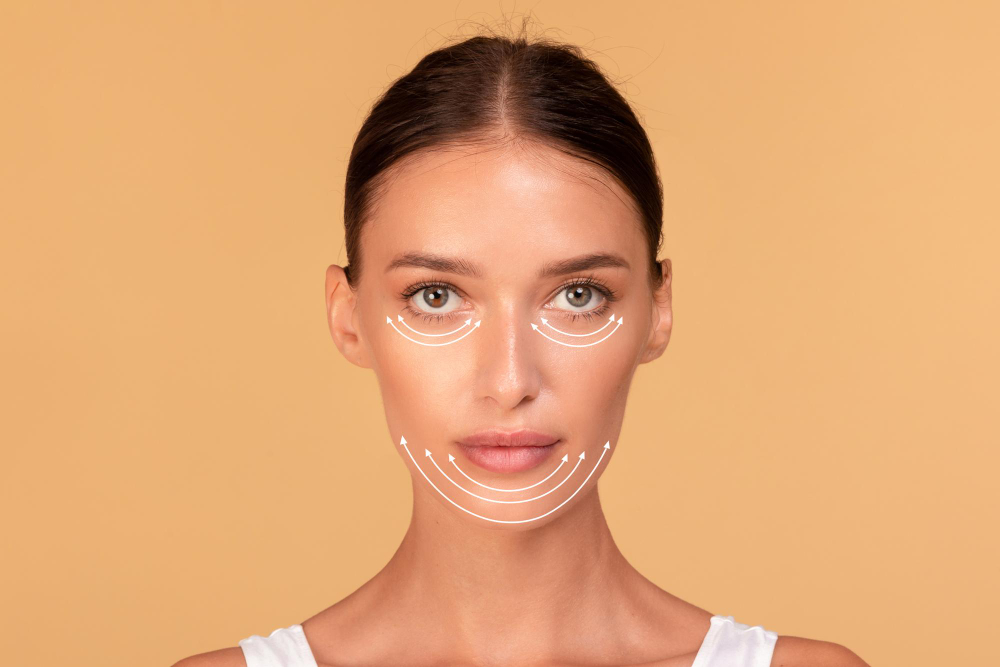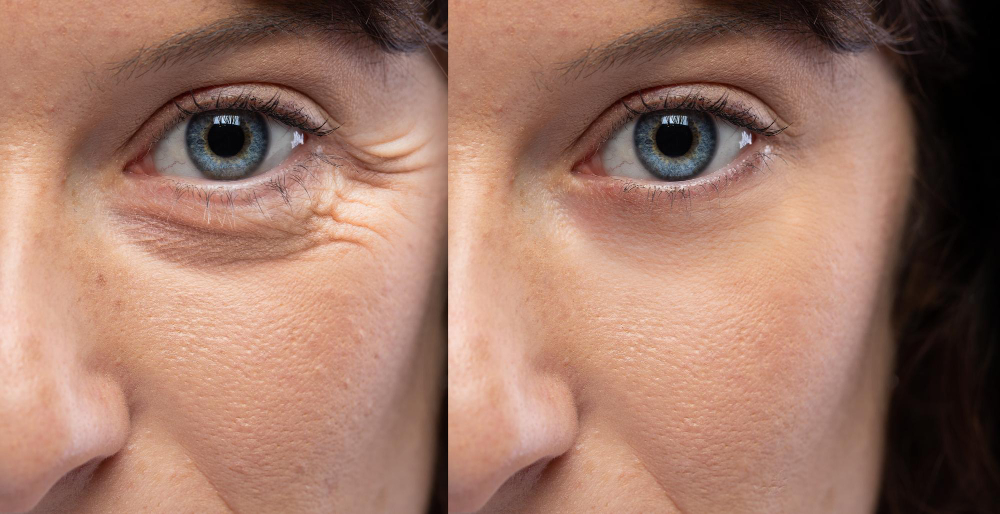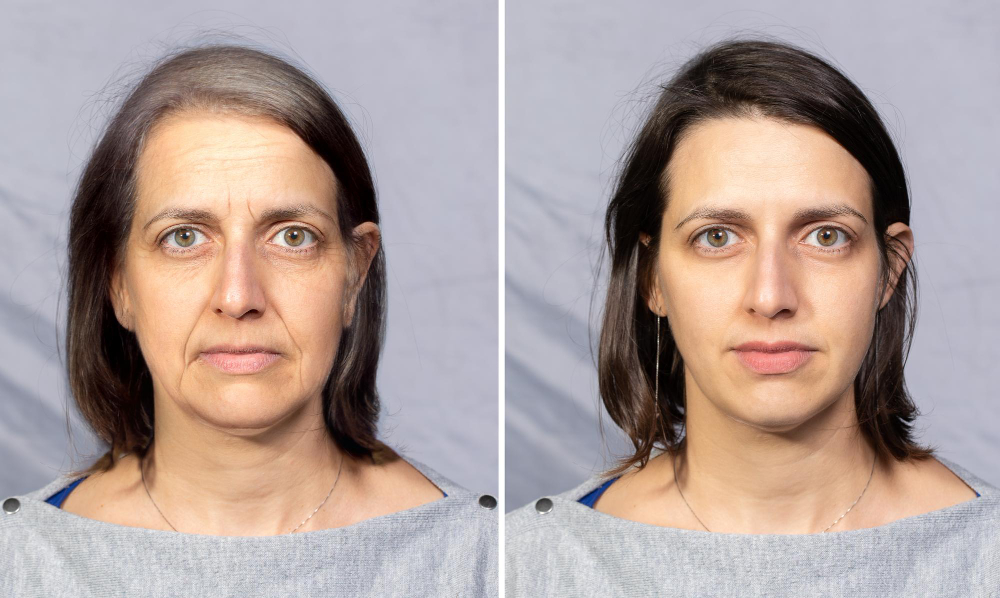What is a facelift?
A facelift, which is also referred to as rhytidectomy, is a surgical method that involves getting rid of extra facial fat, tightening facial muscles, and repositioning or trimming facial skin to achieve a more youthful and firm appearance. This procedure is typically performed on the face, neck, or both.

The surgeon will detach the skin from the fat and muscle beneath it, depending on which section of the face or neck requires a “lift.” The fat will be taken out, and the supporting fascial layers of the face and neck are lifted with sutures. Then, the skin is repositioned and trimmed if necessary.
How does a facelift work?
During a facelift procedure, the surgeon relocates the fat and tissue located beneath the skin to a different position.
- help smooth out creases
- Eliminate the surplus skin that is leading to drooping or outgrowths on the face known as “jowls”.
- lift and tighten the facial skin
Who would be a suitable individual for undergoing a facelift procedure?
Typically, individuals who are suitable for a facelift are:
- People who are in good health and without any medical conditions that might hinder the process of healing.
- Nonsmokers
- People who have a hopeful attitude and practical understanding
What are the different kinds of facelifts?
There are various types of surgeries that can help lift and rejuvenate different areas of the face and neck. These surgeries are collectively known as facelift surgeries.
Deep Plane/SMAS Facelift
A deep plane facelift aims to enhance the appearance of drooping skin around the neck and chin area by lifting and firming up the slack muscles in that part of the face. The procedure involves the surgeon going underneath the musculoaponeurotic system (SMAS), which lies beneath the skin and adjacent to the muscles that are responsible for facial expressions. The surgeon will then reposition, reshape, and refine the SMAS layer to reduce wrinkles and lend a youthful and radiant appearance.
Traditional facelift
To perform a traditional facelift, incisions are made in the areas around your ears, hairline, and beneath your chin. The procedure involves separating your skin from the underlying tissues and tightening the muscles and other supportive structures of your face and neck. Any excess fat in your neck and jowls will be removed if necessary. Your skin is then repositioned over your face and any unnecessary skin is removed, resulting in a natural-looking appearance. This surgery is typically suggested for those who wish to achieve moderate to significant improvement in facial aging.

Mini Facelift
A method used in cosmetic surgery for improving facial appearance involves creating barely noticeable cuts beneath the hairline. By using this method, the surgeon can carefully tighten and polish the skin while getting rid of excess tissue. The mini facelift process typically reduces the presence of jowls, or eliminates them entirely. Jowls regularly manifest in the lower sections of the cheeks and mouth due to decreased collagen creation as people age.
Deep plane facelift
During a deep plane facelift procedure, the surgeon elevates the SMAS, which is the layer of muscle in the face, along with the fat and skin in a unified manner. This type of lift typically deals with various regions of the face simultaneously.
Nonsurgical facelift
A facelift procedure that isn’t surgical doesn’t need extensive incisions or general anesthesia. Nevertheless, it aims to rectify indications of aging such as sagging skin, creases, and wrinkles. Procedures like Vampire facelifts, liquid facelifts, and thread lifts, which are nonsurgical, concentrate on the skin of the face.
How is a facelift carried out?
The type of facelift procedure you undergo will be based on the outcome you wish to achieve.
The conventional method entails creating a cut along the hairline adjacent to the temples, with the incision traveling towards and enclosing the earlobe, before returning to the lower scalp behind the ears.
In order to improve the appearance of the face, it is possible to eliminate or reallocate fat and extra skin. Additionally, the underlying muscle and tissue are repositioned and constricted. In cases where there is not a significant amount of skin drooping, a smaller facelift, known as a “mini” facelift, may be performed using shorter cuts.
In cases where a neck lift is included, elimination of the surplus fat and skin would occur. The skin of the neck will be pulled upwards and back, resulting in a tighter appearance. Typically, a cut is made just below the chin to achieve this.
The cuts that are made during the procedure usually employ either dissolvable stitches or glue specifically made for the skin. On certain occasions, it may require you to go back to the surgeon to take out the stitches. The incisions are created in a manner that matches your hairline and facial configuration for a seamless look.
It is common to have a drainage tube and face bandages after undergoing surgery.

Recovery
It typically requires a period of 2-4 weeks to completely heal after undergoing a facelift. During this time, it is essential to take a break from work.
The signs of bruising remain visible on the face for a minimum of 14 days. It may take anywhere from 6 to 9 months to fully observe the outcome of the facelift.
Your surgeon would instruct you about not being able to drive for a few days following the surgery.
During the initial 2 days, it is necessary to refrain from showering while also ensuring that the bandages don’t get wet. Additionally, activities that require physical exertion, saunas, and massages should be avoided for a minimum of 2 weeks.
During your recovery period, it is recommended to elevate your head using pillows for a few days so as to decrease any swelling.
Stitches will be taken out approximately one week later, unless they were dissolvable stitches.
Several weeks later, bruises, scars, and redness should have become less prominent.
The complete outcome of the facelift should be visible within 6 to 9 months.
A note from rehabturk
A cosmetic operation called a facelift is done to get rid of extra skin, make wrinkles and creases less noticeable, and make the facial tissue firmer.
Getting a facelift is not necessary for medical reasons, and it comes with potential dangers. You must be mindful of the crucial steps required for preparing and recuperating.
Consult a plastic surgeon who is certified by a board if you wish to investigate different options for a facelift and determine if it is suitable for you.
Treatment in Türkiye:
The medical staff of surgical teams, doctors and consultants in rehabturk can provide the best treatment options and free consultations – by striving to keep abreast of the latest medical technologies and methods.

